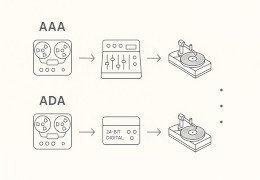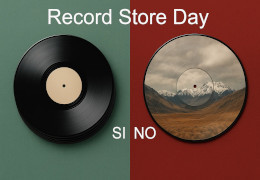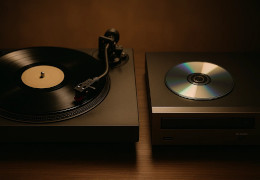How to Recognize a First Pressing Vinyl: Tricks and Tips
Learn how to identify a true first pressing vinyl: catalog numbers, runout codes, sleeve details, and collector tips explained simply.

🔍 What is a First Pressing and Why It Matters
A first pressing is the very first batch of records manufactured when an album was released. They hold historical and collectible value, may feature original mixes or analog mastering, and are usually rarer than later reissues.
🕵️♂️ Tricks to Identify a First Pressing
1) Catalog Number and Label Logo
Compare the catalog number on the spine, back cover, and label. The first pressing uses the original code; reissues often have suffixes like -1, -2, RE or updated label logos.
2) Matrix / Runout
In the runout area near the center label, look for matrix codes. First pressings often feature simpler, hand-etched inscriptions. Marks such as RE or -B usually indicate later pressings.
3) Sleeve and Printing
Early editions may have gatefold covers, inserts, or posters missing in later reissues. Paper quality, print sharpness, and even small typos can reveal a first edition.
4) Inserts and Stickers
Original inner sleeves, posters, coupons, or hype stickers are a strong clue. Reissues tend to replace them with generic sleeves or new barcodes.
5) Weight and Vinyl Type
Vintage LPs often weigh 120–140g, while modern reissues are often 180g audiophile editions. First pressings are usually black vinyl, not colored or picture discs.
Signs of a First Pressing
- Original catalog number without suffixes
- Simple, hand-etched runout codes
- Original inserts and hype stickers
- Label logos consistent with the release year
Signs of a Reissue
- Suffixes like -2, RE, or barcodes
- Modern copyright notes
- “Remastered” stickers, 180g mentions
- Generic plain inner sleeves
⚠️ Common Mistakes to Avoid
- Judging only by the sleeve: reissues can look almost identical.
- Mixing up limited editions with first pressings: a recent colored vinyl is not a first press.
- Ignoring the runout: it’s the key evidence of pressing history.
🏆 Why Collect First Pressings
They are pieces of music history with authentic sound from their original era. First pressings often retain or even increase their collector value over time.
Glossary
- Catalog Number
- The official release code assigned by the label, key for identifying the edition.
- Runout / Matrix
- Etched codes in the inner groove indicating stampers, pressing batches, or revisions.
- Gatefold
- A fold-out sleeve often including photos, artwork, or credits.
- Hype Sticker
- A promotional sticker on the cover or shrink wrap, often unique to the release era.













